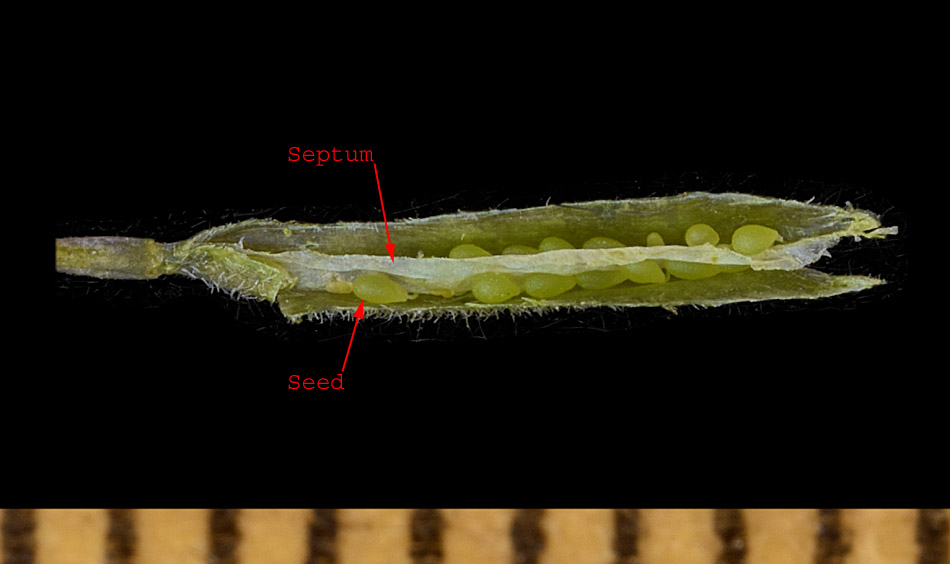
Yellow Whitlow-Grass
Draba nemorosa

Yellow Whitlow-Grass
Silique Split Open
Craven
19-May-2020
Note the silique is flattened parallel to the septum. The silique opens lengthwise and there are multiple seeds in each of the two locules. Each locule has two rows of seeds but this is hard to make out in this photo.
Nemorosa: Answers to key questions in Budd's Flora and Manual of Montana Vascular Plants leading to this species.
| |||||||||||||||||||||
Draba: Answers to key questions in Budd's Flora and Manual of Montana Vascular Plants leading to this genus.
|
Cruciferae: Answers to key questions in Budd's Flora leading to this family.
|